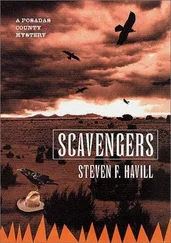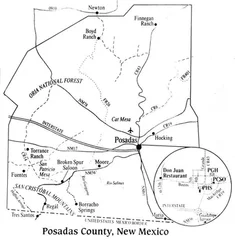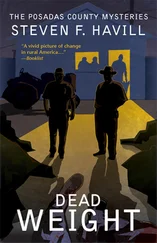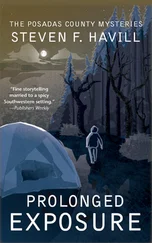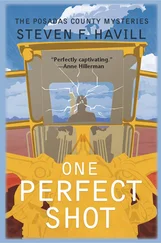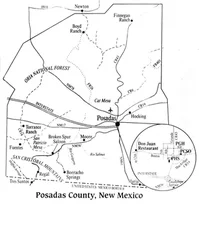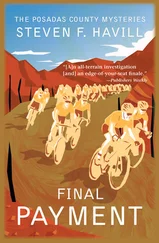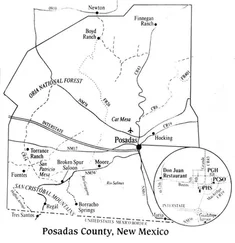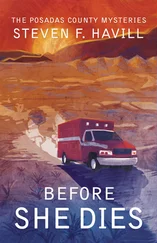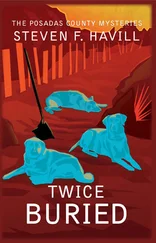Steven Havill - Statute of Limitations
Здесь есть возможность читать онлайн «Steven Havill - Statute of Limitations» весь текст электронной книги совершенно бесплатно (целиком полную версию без сокращений). В некоторых случаях можно слушать аудио, скачать через торрент в формате fb2 и присутствует краткое содержание. Год выпуска: 2011, Издательство: Poisoned Pen Press, Жанр: Полицейский детектив, на английском языке. Описание произведения, (предисловие) а так же отзывы посетителей доступны на портале библиотеки ЛибКат.
- Название:Statute of Limitations
- Автор:
- Издательство:Poisoned Pen Press
- Жанр:
- Год:2011
- ISBN:нет данных
- Рейтинг книги:3 / 5. Голосов: 1
-
Избранное:Добавить в избранное
- Отзывы:
-
Ваша оценка:
- 60
- 1
- 2
- 3
- 4
- 5
Statute of Limitations: краткое содержание, описание и аннотация
Предлагаем к чтению аннотацию, описание, краткое содержание или предисловие (зависит от того, что написал сам автор книги «Statute of Limitations»). Если вы не нашли необходимую информацию о книге — напишите в комментариях, мы постараемся отыскать её.
Statute of Limitations — читать онлайн бесплатно полную книгу (весь текст) целиком
Ниже представлен текст книги, разбитый по страницам. Система сохранения места последней прочитанной страницы, позволяет с удобством читать онлайн бесплатно книгу «Statute of Limitations», без необходимости каждый раз заново искать на чём Вы остановились. Поставьте закладку, и сможете в любой момент перейти на страницу, на которой закончили чтение.
Интервал:
Закладка:
“Yes, ma’am.”
“Did someone call Perrone?”
“I just did,” Abeyta said. “I wanted to be sure.” Even as he spoke, an ambulance swung into view, lights flashing.
Tom Pasquale slammed the back doors of the Expedition. “Did they get lost, or what?” He shook his head in wonder. “I’ll head ’em off.”
“We’re probably going to need Mike, too,” Estelle said, referring to Deputy Mike Sisneros, who until the consolidation had been one of the village officers. “Wasn’t he at the office with you guys earlier?”
“He was,” Linda Real said. “He and I were working on trying to reboot one of the computers, and then he and Janet were going over to his folks for dinner.”
“Maybe we won’t need him,” Estelle said. “We’ll see.” She popped the trunk of her car and picked up a bundle of small surveyor’s flags, each on its own slender wire. She waited until Pasquale had backed his patrol unit out of the way, then beckoned to Abeyta. “You all set?” she asked Linda. The photographer had already unlimbered one of her 35s, and was surveying the terrain through a wide-angle lens.
“You bet.”
“Right down the middle,” Estelle said. She handed Deputy Abeyta a bundle of flags, keeping half for herself. “Lead on,” she said, and set off behind Abeyta, placing her steps in his.
The washboards and ruts of the two-track showed fresh vehicle tracks of several types. Highland Drive was a favorite access route for hikers wanting to reach the base of Cat Mesa, or for neckers in too much of a lustful rush to find somewhere more romantically elegant.
Twenty-five yards before the discarded concrete barriers, the path widened into a casual parking lot not quite large enough to swing the average vehicle around in a single maneuver.
Estelle stopped a dozen feet shy of the arroyo edge. Along the arroyo, the prairie was rumpled, dotted here and there with the tough, stunted vegetation that could survive on eight inches of moisture a year. Over decades, cattle had grazed the sparse bunch grass to dust.
The terrain sloped slightly, and a dozen feet beyond the last concrete barrier, a grove of elms had managed to grab hold and flourish. No one had planted the trees. Perhaps a single seed had blown in, or had been part of a load of yard debris dumped over the side. The grove now provided the illusion of shade in the summer, the illusion that this was a secluded little park that broke through the dreariness of the prairie.
What could have been a picturesque spot with a commanding view of the jagged buttress of Cat Mesa to the north was instead commanded by junk. A selection of crushed cars, some old enough that they were rusted to an even russet patina, had been pushed over the arroyo bank, providing protection against the cut and surge of storm water. The car carcasses were decorated with a selection of snagged flood detritus, as well as a scattering of old tires, stoves, barbecue grills, and enough beer cans to start a museum.
At the point, the bottom of the arroyo was fairly wide, stretching out nearly sixty feet to the inside of the corner on the other side. The seasonal waters had tried to carve the outside of the sweeping course, keeping the arroyo bottom that lay beyond the average junkster’s toss reasonably clear.
“There’s a path over there on the left,” Deputy Abeyta said.
“Okay,” Estelle said. Linda stopped and her camera clicked. Estelle saw that one of the latest automotive contributions was the engineless, doorless carcass of a 1957 Oldsmobile, one heavily chromed winged fender still recognizable. The Olds lay skewed on its top, nose down, the crumpled front end crushed over the innards of the historical layer of metal underneath. The grille, missing its teeth and the chromed front bumper, dug into the sand of the arroyo bottom. The frame was either broken or bent, the engine and transmission missing.
As Estelle moved to the edge, Abeyta touched her on the arm and pointed. “Right down there.”
“I see it.” From under the mess of twisted and rusted steel, a single white arm extended, the hand palm-down and the fingers spread as if trying to caress the warm sand.
The undersheriff glanced at Linda, whose camera was eating through film at a furious rate.
“I climbed down over there,” Abeyta said. He pointed eastward, where he had found a narrow slip through the trash. “Or, there’s a cattle trail down into the arroyo a little further up the wash.”
“Let’s do that,” Estelle said, and she followed the deputy east, around the last of the concrete barriers, past the final grove of elms, and then another thirty yards to where the lip of the arroyo had been caved in by cattle traffic. No human shoeprints marked the bare dirt.
She scrambled down into the arroyo, staying near the north side of the cut, the width of the dry wash between her and the body. She saw the wiggly tracks that might have been left by Butch Romero’s motorcycle. It looked as if he had blasted into the corner, cutting too close to the bank and the junked cars in his path.
“Linda?” Estelle called, and the photographer looked up. “Come down the same way we did. And I need these tracks. Especially where they come close to the front of the car.”
“You got it.”
“The kid on the motorbike says that he hit the victim’s arm when he slid by on his bike. I’m not sure that he did, but we’ll see.”
“I walked straight along the bank,” Deputy Abeyta offered, pointing at the other side of the arroyo. “Right along the very edge under all those tree roots. I’m thinking that it’s not likely anyone else would stay so close to the bank.”
“Good man.” Estelle crossed the arroyo toward the corpse slightly upstream of the site, stepping carefully like a cat sneaking up on an unsuspecting finch. She saw, when she stepped gingerly over Butch Romero’s fresh bike tracks, that the body wasn’t actually under the car. Rather, it had slid down along the side of the inverted Oldsmobile, then tumbled into a narrow cave formed by the bashed-in roof of a late ’40s vintage sedan.
“I stepped right across there,” Abeyta said, and Estelle could see the loose indentations of his boots in the sandy gravel. “I bent down to see what I could, checked to make sure that she was dead, and then backed out. Nobody’s been here in between.”
Estelle stood quietly, surveying the tangle. She counted the remains of at least a dozen vehicles, including several from the 1940s, the peak of the rounded fender era. The Oldsmobile appeared to be the most recent addition, perhaps toppled into the arroyo within the decade.
With one hand for balance on the projecting frame member of the Olds, Estelle knelt down. She reached out and touched the woman’s wrist. The flesh was cool and soft, and Estelle’s pulse accelerated. She slid her index finger carefully under the victim’s and lifted gently. The hand was completely limp, with no rigor.
“Tony?”
“Right behind you,” Abeyta said.
“Make sure that Perrone is en route,” she said. “If he can’t break away, then we’re going to need someone else ASAP. Dr. Francis should be flying in, and maybe we can speed things up. Okay?”
“Got it.”
She let her body sink down, releasing her grasp on the Oldsmobile and repositioning her support hand on the yawning hole where the headlamp had once been.
The marks in the sand were clear. Unless the body had been moved since Butch Romero’s motorcycle roared around the corner, the bike’s tires hadn’t actually touched the woman’s hand or arm. Close enough, but no contact. The skin was unblemished. But at one point, the fingers had flexed, drawing short, vague lines in the sand-nothing desperate or repeated, but instead a single spasm, a single gentle raking as the last breath of life escaped.
Читать дальшеИнтервал:
Закладка:
Похожие книги на «Statute of Limitations»
Представляем Вашему вниманию похожие книги на «Statute of Limitations» списком для выбора. Мы отобрали схожую по названию и смыслу литературу в надежде предоставить читателям больше вариантов отыскать новые, интересные, ещё непрочитанные произведения.
Обсуждение, отзывы о книге «Statute of Limitations» и просто собственные мнения читателей. Оставьте ваши комментарии, напишите, что Вы думаете о произведении, его смысле или главных героях. Укажите что конкретно понравилось, а что нет, и почему Вы так считаете.

